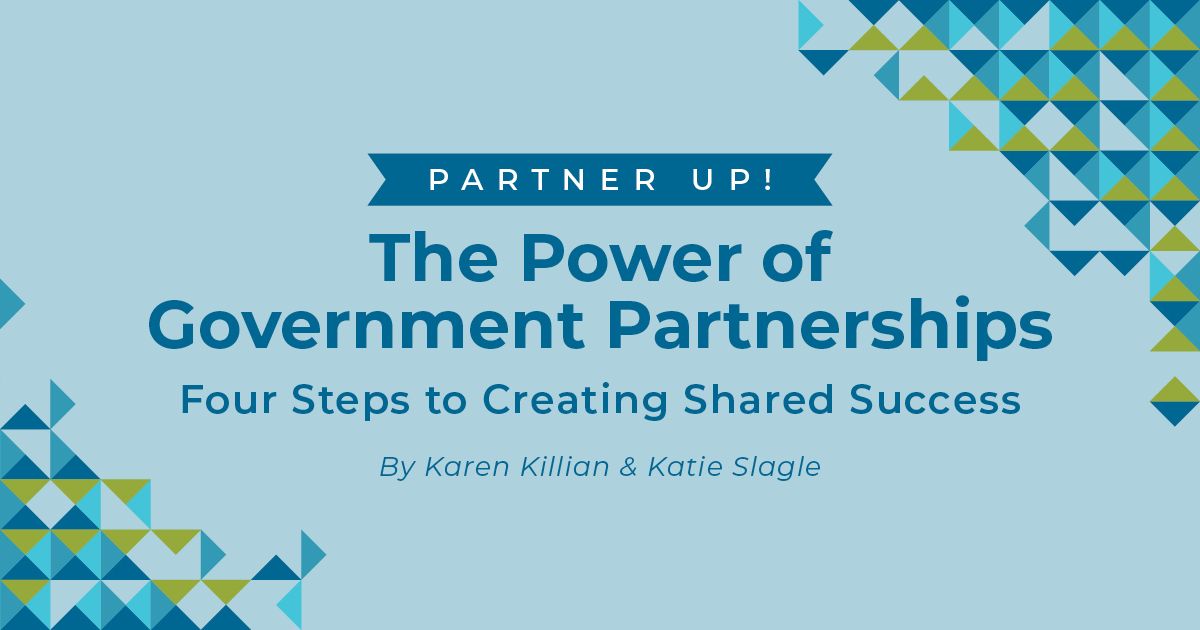What do American Airlines, NASCAR, and Kohler have in common? They all partner with the federal government to support missions that are bigger than their companies’ bottom lines.
At their most basic, partnerships between the federal government and private industry are mutually beneficial, collaborative relationships that advance important ideas and social issues. Times of crisis remind us of the importance of these relationships. COVID-19 spurred the creation of several crucial partnerships to educate the public about the virus and keep us informed and safe. The Federal Retail Pharmacy Program is an excellent example of collaboration between federal, state, and territorial governments; 21 national pharmacy partners; and independent pharmacy networks to increase access to COVID-19 vaccinations across the United States.
Why Partner Up?
In addition to advancing the greater good, federal-industry (or industry-industry) partnerships have multiple strategic benefits, including:
-
Stretching Budgets: Messages can be amplified and spread through partner channels.
- Expanding Reach: Access to your partner’s audience can be instrumental in getting your message in front of the right people.
- Aligning Brands: Partners can get a brand boost and build credibility and trust by aligning or associating with a good cause or another respected brand (and vice versa).
- Making a Greater Impact: Ultimately, better outcomes can be achieved through robust partnerships among organizations with shared missions.
How to Partner for Shared Success
Partners are valuable assets and creating a positive partner experience can help you build the capacity and resources you need to meet your program goals. Forming productive, lasting partnerships takes thoughtful planning, communication, and commitment. Based on our work developing and implementing partnership programs across the federal government and with input from both public and private sector professionals, we recommend following these four key steps:
-
Frame it Up–Formalize Your Partnership Program. A clear framework is the key to achieving a sustainable solution. Set a clear path forward by documenting your goals, desired outcomes, strategies, and metrics. To gain consensus internally and present a case for funding or resources, it’s important to clearly define why the program is needed and how it will work, as well as:
- Objectives: What do you want to accomplish through partners and the program? How does the partnership advance program, campaign, and/or organizational goals?
- Mutual benefits: What can each partner expect to gain from the partnership? What’s the benefit to each partner/type of partner?
- Challenges: What obstacles does your organization face in accomplishing your goals? What challenges may partners face?
- Risks: What are the risks that could potentially derail the program, and how can you mitigate against them?
- Your offerings: What can you offer your partners (e.g., grant funding, tools, resources, subject matter expertise, access)?
- The “ask”/your needs: What do you need from partners (e.g., impact statements, operational metrics, audience outreach)?. Make sure your ask is specific and clear.
- Metrics: How will you measure the program and/or partnership’s success and the impact of the partnership on the program?
- Make a List: Create a Potential Partner Inventory. Define all potential partners based on your objectives, challenges, and benefits. Partnership success hinges on a mutual commitment to the project’s mission, so look for partners that not only bring resources and expertise to the table, but also share your mission and believe in your cause. Group your potential partners based on type of partner—for example, media, financial, technology.
- Get Engaged: Develop a Partner Engagement Strategy. Define all partner communication and outreach activities, including who should make the ask and how to make it. Establish the main point of contact within your organization for each partner—who is their go-to? Often, people and roles change within organizations, so it’s important to keep a communications log. If a change occurs on either side, the relationship history won't get lost. Document all communications and ask for feedback from potential partners who accept and those who decline. You can use this valuable feedback to modify your ask. Check with your organization’s legal department about creating partnership agreements.
- Plan it Out: Develop Action Plans based on Partner or Partner Type. Clearly document the actions and steps that will be taken to put each partnership in motion. Tailor the plan by partner or partner type and make sure to document expectations, define deliverables, establish communications cadence and frequency, and form feedback mechanisms. You’ll increase partner accountability and engagement by including partner input in the development of the plan. And remember, informal communications (through text, phone calls, etc.), as well as scheduled meetings, help build rapport and trust between partners and keep everyone moving toward the same goals. Talk openly about what’s going right and what’s going wrong to encourage creative problem solving and build trust.
You and your partners are on a shared journey. Be intentional and disciplined about how you develop, maintain, and grow the relationships. A strategic, thoughtful partnership program has the power to multiply your efforts, amplify your message, and help you more efficiently meet program and organizational goals.
Considering a partnership to advance your mission? LMD can help.
This blog was co-written by Director of Account Services Katie Slagle and President Karen Killian.

